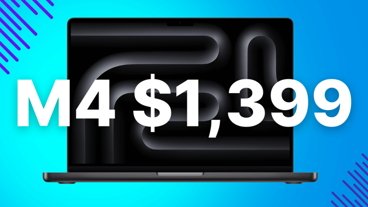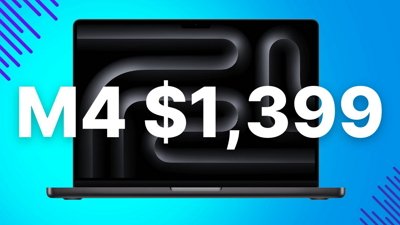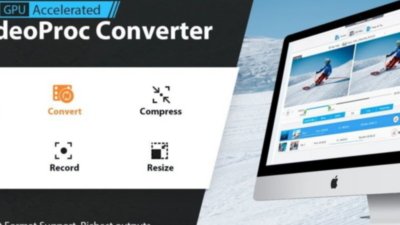It has long been rumored that a major revision to Apple’s iMac consumer desktop line would not only give the internals of the machine a major bump, but also mark a major shift in the form-factor. As the current iMac line, while not particularly pokey in any respect, lacks the high-MHz processor and large screen necessary to compete in a marketplace dominated by ‘Wintel’ machines, Apple is working on a revision to the line whose introduction is sure to be seen as just as large a revolution as that of the original.
The form factor of the current machine has been essentially unchanged since the introduction of the original Bondi Blue iMac in 1998. Over the last 3 years there has been only one case revision, barring color changes, and it was a modest update at that- it came with the introduction of the ‘Kehei’ or ‘slot loading’ iMac line in October 1999. The updated design sported a smoother shell without the metal RF plating that was visible under the previous model’s polycarbonate skin, and this exact form factor still exists today. Indeed, the iMac is the only machine in Apple’s lineup that is clearly a holdover from the early days of Jonathan Ive’s tenure as chief of Industrial Design at Apple. While most other Apple products are sleek and minimal, packing the maximum amount of functionality into the smallest space, the iMac remains colorful and perhaps somewhat bloated— not at all in line with the currently fashionable minimalist design ethos introduced in the PowerBook G4.
It’s no surprise that a major change to the iMac is coming. What has been difficult to nail down is exactly what will be changed, and when these changes will occur. What has precluded this product from being introduced is component availability and prices: AppleInsider sources have revealed, however, that the prices of key components has reached an acceptable level at which Apple can sell the new iMac at a price palatable to consumers and still retain profitability on its most popular line.
AppleInsider has learned that the new-generation iMac will be introduced in the first months of 2002, either at MacWorld Expo San Francisco in January, MacWorld Tokyo in March, or at an “Apple Special Event†akin to the launches of the iBook (Dual USB) and iPod. Its external design will be nothing short of spectacular. The new iMac will continue the convenience of the All in One design that the current model holds, but in a significantly sexier manner. Based around a 15†TFT Flat-Panel display, running at a native resolution of 1024x768, the new iMac will closely resemble the current 15†Apple Studio Display from many angles. However, the enclosure will be thicker (so as to accommodate the extra bulk of computer internals), and constructed with more robust, scratchproof materials similar in texture and finish to the iBook.
The changes in technical specifications in the new iMac will be as innovative as the changes to the case design. At the center of the new iMac will be IBM’s 750FX “Sahara†G3, running at speeds approaching 1Ghz. The Sahara chip is designed for low-power, low heat operation, thereby allowing the new iMac to continue the ‘fan-less tradition’ of nearly silent operation that has become a hallmark of the line. Other features include a faster front side bus, and an nVidia GeForce2 MX graphics accelerator with 32 MB of VRAM. All models will ship with at least 128 MB of RAM, as these machines will be pre-installed with Mac OS X as their default operating system.
Similar to the current iBook, levels of iMac trim will not be distinguished by processor speed, but by choice of DVD or DVD/CD-RW Combo drives. There is also a possibility of the DVD-R/CD-RW SuperDrive becoming available as a BTO option on this new iMac, therefore bringing DVD movie creation to the masses—a long held vision of Apple CEO Steve Jobs. Pricing, while evidently not set in stone, will begin at $999 for the low-end, DVD-equipped model, and around $1299 for the high-end, Combo drive model. If a SuperDrive option is available, it will add between 300 and 500 dollars to the price of the Combo drive model, probably bringing the grand total of the loaded model to $1599. Whether or not a SuperDrive is available on the new iMac is probably dependent upon the availability of a slot-loading model.
Obviously, the introduction of this iMac is dependant upon Apple’s ability to produce a PowerMac model that runs at a higher MHz than the consumer line. It is the intention of Apple to close the MHz gap, and AppleInsider sources indicate that this will happen for both the Professional and Consumer lines. What is uncertain is if the PowerPC G5 will break the 1 GHz barrier in the pro line as indicated by many sources. This is immaterial, however, for the “Apollo†G4 (7460) is already being fabricated at speeds well in excess of 1 GHz and could theoretically serve as an interim solution for the PowerMac.
Stay tuned to AppleInsider for further updates on the new iMac, Apollo G4, and the PowerPC G5.
 AppleInsider Staff
AppleInsider Staff








 Christine McKee
Christine McKee
 Malcolm Owen
Malcolm Owen

 Sponsored Content
Sponsored Content

 Amber Neely
Amber Neely










